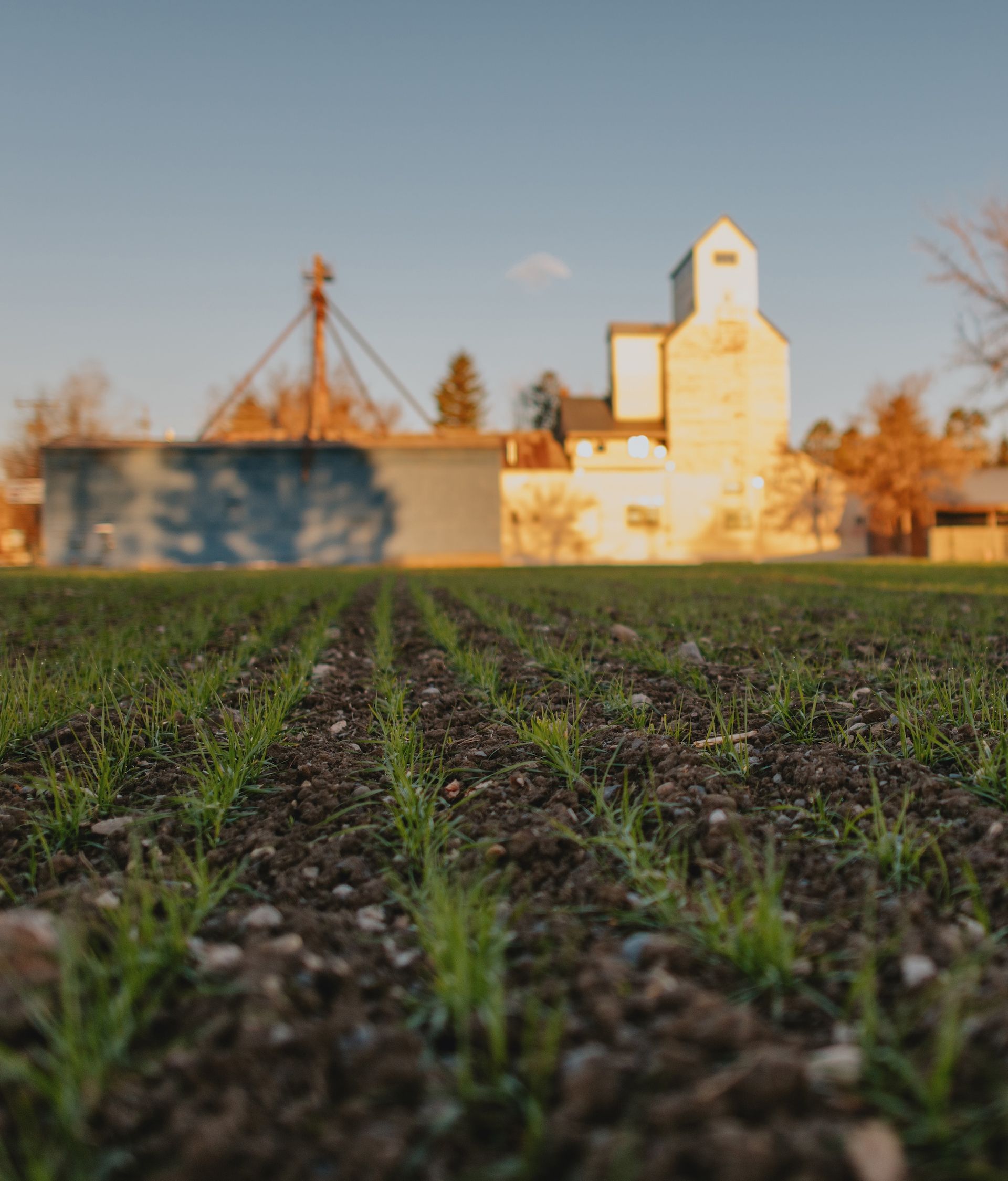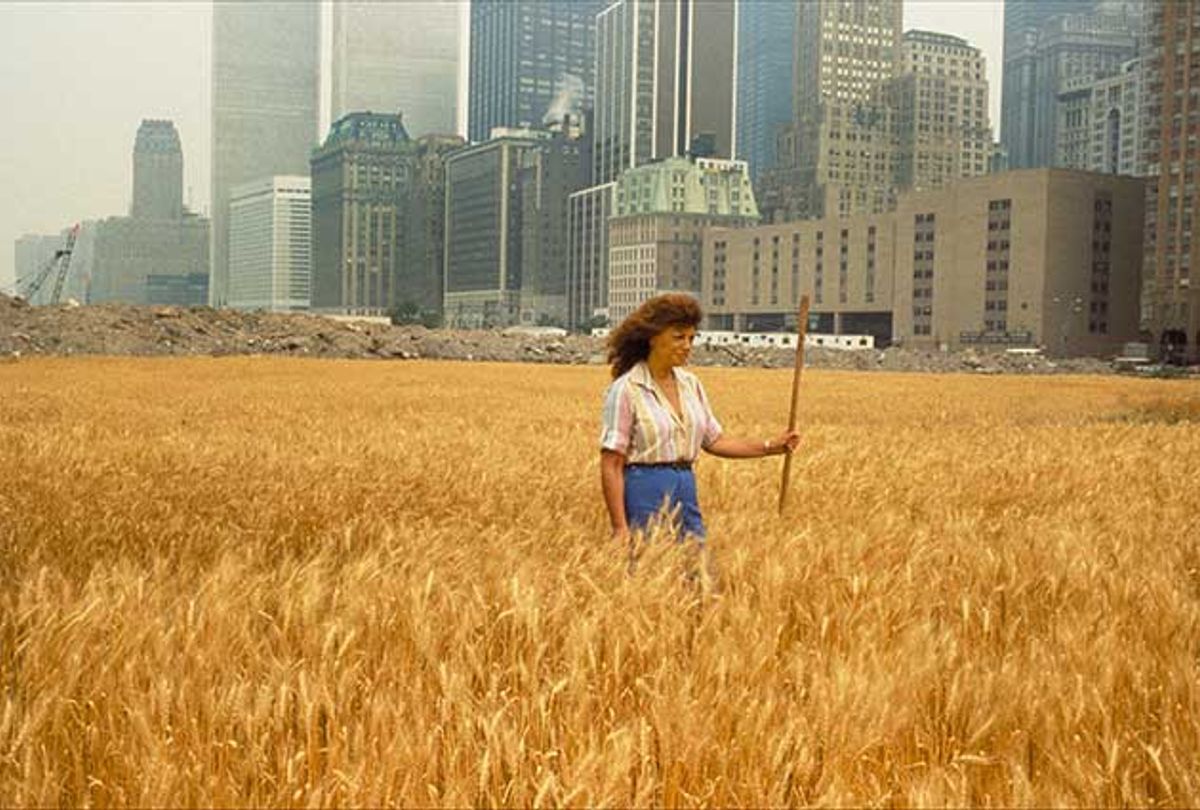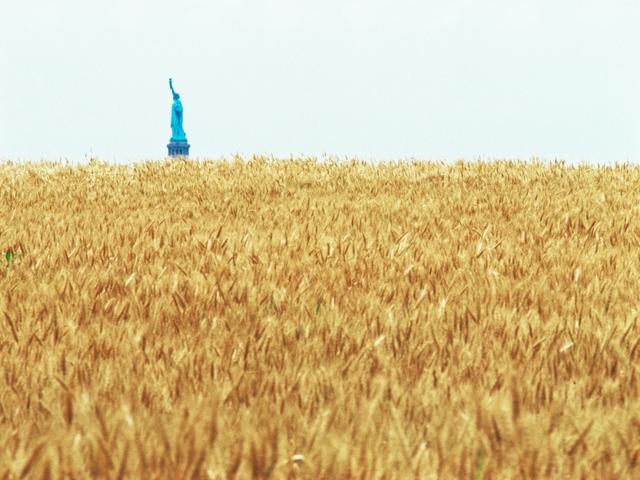In 1982, Agnes Denes planted, tended and harvested a two-acre field of golden wheat near the World Trade Center on valuable land that would soon be developed into Battery Park City in Lower Manhattan. This improbable intrusion in the dense urban landscape “represented food, energy, commerce, world trade and economics”, the conceptual and environmental artist wrote in her documentation of Wheatfield—A Confrontation. “It referred to mismanagement, waste, world hunger and ecological concerns. It called attention to our misplaced priorities.”
More than four decades later, Denes, now 93, has repositioned her pioneering work of Land art in the context of Bozeman, Montana, at Tinworks Art. In a booming city losing open space and agricultural land to rapid development, Wheatfield—An Inspiration. The seed is in the ground is sprouting across an acre and a half at a former industrial site—including a tin manufacturing warehouse, agricultural barn and mill building—that has been transformed into a seasonal exhibition space focused on projects exploring the American West.
Denes’s ecological artwork ushers in Tinworks’ 2024 season (15 June-19 October), which is also showcasing projects by James Castle, Layli Long Soldier, Lucy Raven, Stephen Shore and Robbie Wing inspired by the region’s landscape.
“This whole complex was slated to be developed when Tinworks was established in 2019, but instead the energy and presence of artists and their artwork took hold,” says the Tinworks director Jenny Moore, who led the Chinati Foundation in Marfa, Texas, for almost a decade before being hired by Tinworks last year after it committed to making the site its permanent home. “Wheat has played such a profound role in shaping Montana’s culture and economics, but is an element that we’re losing regionally,” she says. Denes, who had a full retrospective at the Shed in New York in 2019, was the first artist the director thought to approach in her new job. “That iconic image of Agnes standing in the Wheatfield with the Financial District behind her, holding a staff in her hand like this feminist ecological artist warrior, has long lived in my mind,” Moore says.

Agnes Denes, Wheatfield—An Inspiration. The seed is in the ground, 2024. Tinworks Art, Bozeman, Montana Courtesy the artist and Leslie Tonkonow Artworks + Projects. Photo: Blair Speed
The idea that Tinworks’ land was being reclaimed for artists and their ideas appealed to Denes, who conceived her new piece as a crop of winter wheat, planted last October by volunteers like “seeds of hope”, according to the artist. This time, the art has won out over development. In 1982, Denes planted a crop of spring wheat by herself in May, which yielded more than 450kg of wheat four months later on land then quickly consumed by construction. (Another version of Denes’s Wheatfield project is on view in Basel, Switzerland, all summer, after debuting this month as part of Art Basel’s public art programming.)
As part of Wheatfield—An Inspiration, in a partnership with the agriculture department at Montana State University in Bozeman, Tinworks has been giving out spring wheat seeds to the community and inviting people to plant in solidarity on any fallow piece of land around town. In the autumn, Tinworks will have small mills on site to process harvested grain into flour, which will be used in bread by the neighbourhood bakery Wild Crumb and distributed by a local food bank.
Moore hopes the piece inspires the community to come together, achieve a crop and think about food sustainability in creative ways. Wheatfield—An Inspiration also challenges Tinworks to consider how else to use its land in perpetuity.
“We recognise the responsibility of it being a civic, public green space,” Moore says. “What does that mean, artistically and institutionally? Will we use it as a site for food production? Is it a site that educates the community to what kind of plant species needs to be returned to this landscape? We’re just at the beginning of that conversation.”



